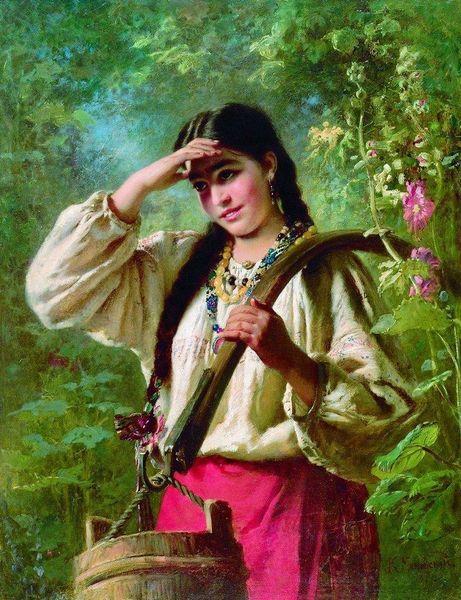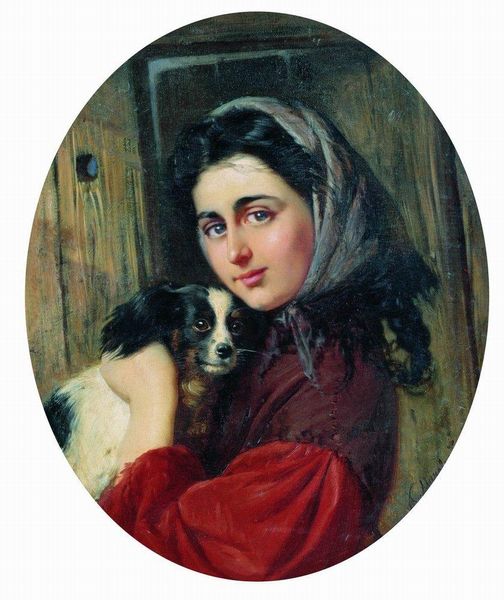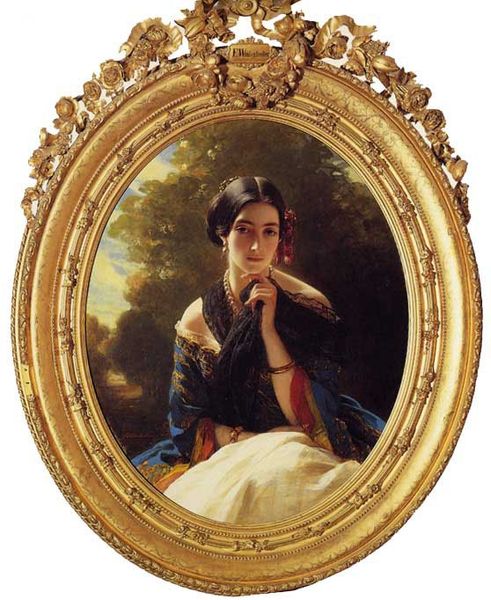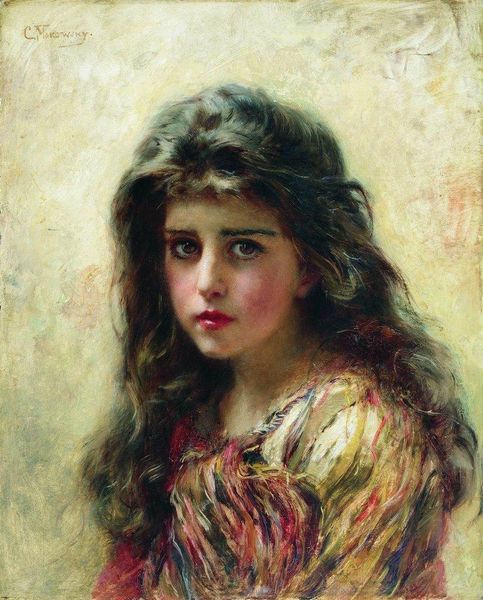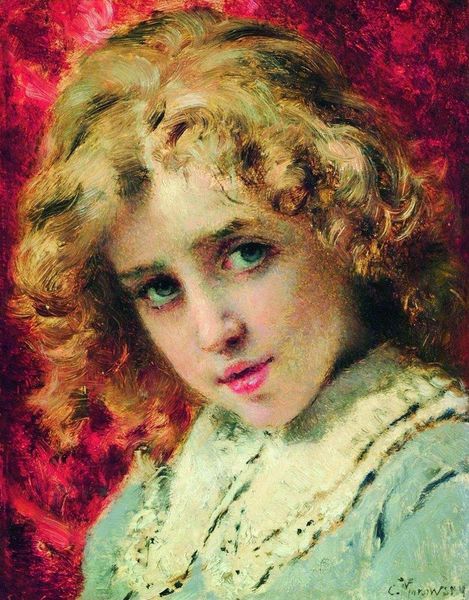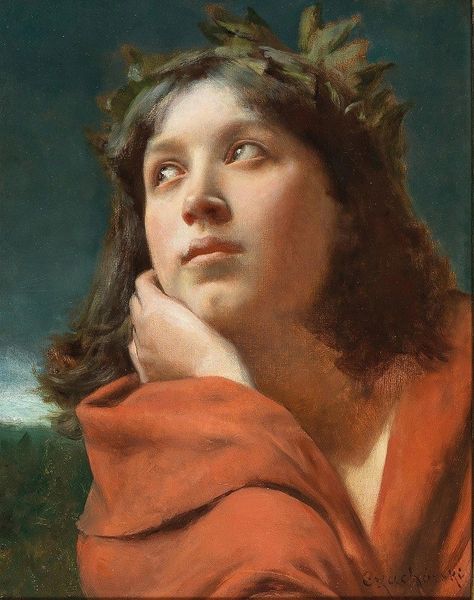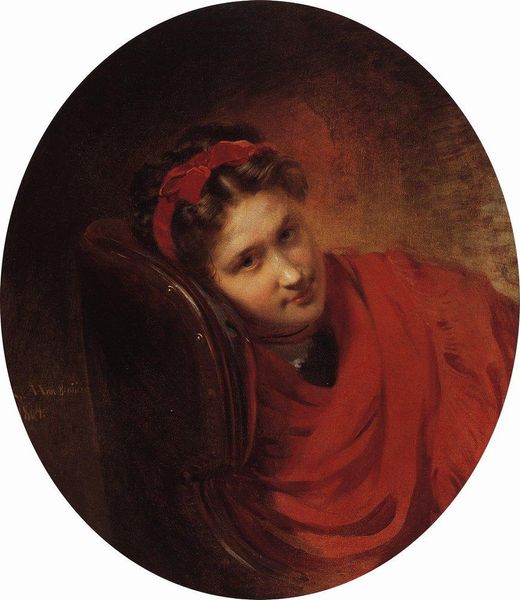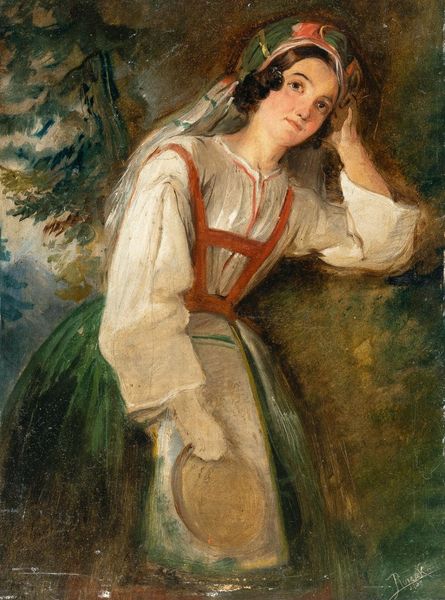
Copyright: Public domain
Editor: Here we have "Portrait of the Boy," painted in 1875 by Konstantin Egorovich Makovsky, using oil paints. The piece feels incredibly intimate, like a fleeting glimpse of a private moment. The colours are rich and the composition, an oval, draws you right to the boy's face. What strikes you about the painting? Curator: Formally, I am interested in how Makovsky manipulates texture and tone to evoke mood. Notice how the rough, almost impasto-like application of paint in the background contrasts sharply with the smoother, more refined rendering of the boy's face. The dark blues and greens surrounding him push the red hues of his garments forward in the composition. It directs our gaze but what could it signify in the grand scheme? Editor: So the brushwork and color palette aren't just decorative, they’re tools used to guide the viewer’s eye and emphasize certain aspects? What would you say that specific choice of palette signifies? Curator: Exactly. Look at how light catches the boy's face; the tonal arrangement generates the painting's narrative quality. Note how this use of dark surrounding tones create a space where one feels as though we've caught an elusive intimacy and how our eye is further enlivened and then contained by the soft red notes. Editor: It's like the colour wants to push beyond its boundaries. How amazing it all converges. This really shows how a painter’s formal choices create a sense of drama. Thank you. Curator: Indeed, reflecting on these principles in visual structures offers rewarding interpretative value in unlocking artistic intention.
Comments
No comments
Be the first to comment and join the conversation on the ultimate creative platform.


